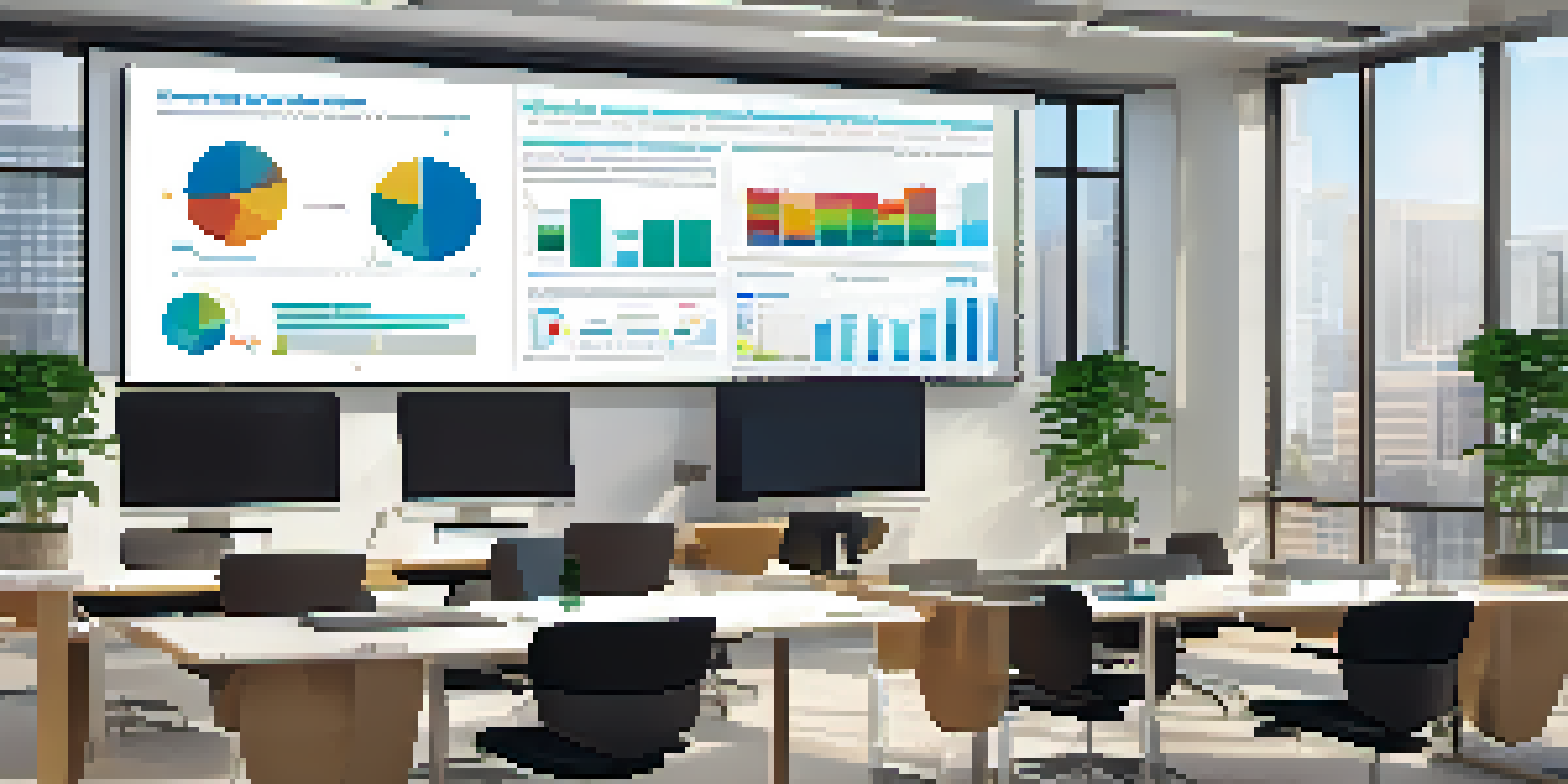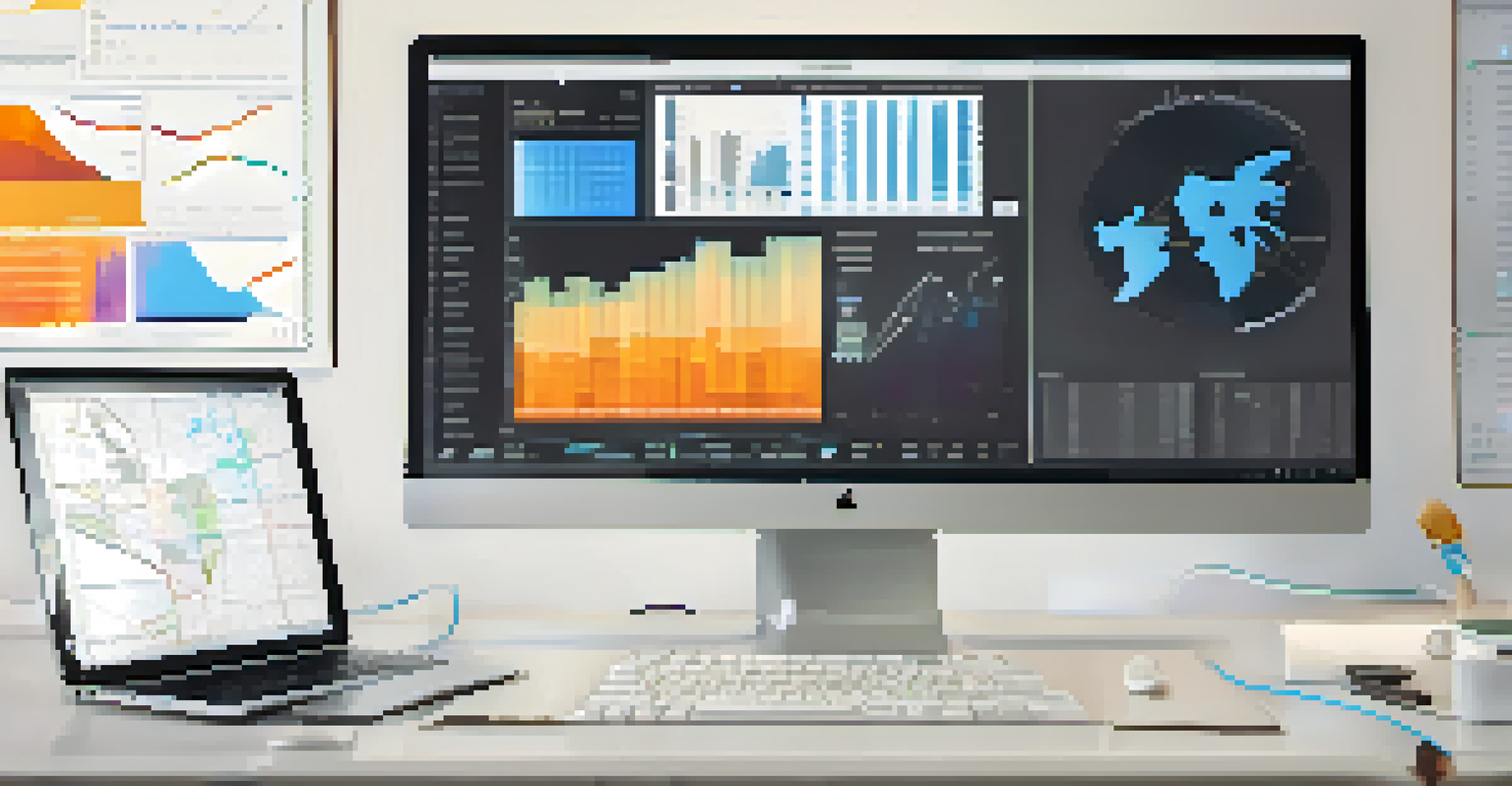The Importance of Data Storytelling in Visualization Software

Understanding Data Storytelling and Its Significance
Data storytelling is the art of using narratives to convey insights derived from data. It goes beyond just presenting numbers and charts; it crafts a story that resonates with the audience. This approach helps to contextualize data, making it more relatable and easier to understand.
Data is the new oil, but like oil, it must be refined to be valuable.
When we think about storytelling, we often picture a captivating narrative that draws us in. Similarly, data storytelling invites the audience to engage with the data, highlighting the key takeaways through a compelling narrative. This connection is crucial, especially in a world overwhelmed by information.
Ultimately, data storytelling transforms raw data into meaningful insights, allowing decision-makers to grasp complex concepts quickly. By blending data with storytelling techniques, we can create a more impactful communication tool that drives action and understanding.
The Role of Visualization Software in Data Storytelling
Visualization software serves as a canvas where data storytelling comes to life. These tools enable users to create charts, graphs, and interactive elements that illustrate data points effectively. By visualizing data, we can capture patterns and trends that might be missed in traditional formats like spreadsheets.

Imagine trying to analyze a complex dataset without any visual aids—it's akin to finding your way through a dense fog. Visualization software cuts through this fog, illuminating the pathways and helping users navigate through the data landscape. This clarity is essential for effective storytelling.
Data Storytelling Engages Audiences
By weaving narratives around data, storytelling captivates viewers and promotes deeper understanding.
Moreover, visualization software often includes features that allow users to customize their visuals, tailoring the story to their audience. This personalization enhances engagement, as viewers are more likely to connect with data that speaks directly to them and their needs.
Engaging Your Audience through Data Narratives
One of the primary goals of data storytelling is to engage the audience. An effective narrative captivates the viewer's attention, making them want to learn more about the data presented. This engagement is crucial for driving interest and promoting discussions around the insights shared.
The goal is to turn data into information, and information into insight.
Consider the difference between a dry presentation filled with statistics and a story that weaves those statistics into a relatable context. The latter invites questions, encourages exploration, and fosters dialogue among stakeholders. Engaging narratives empower audiences to connect emotionally with the data.
Furthermore, engaging storytelling can lead to better retention of information. When people relate to a story, they are more likely to remember the key points, making it easier to recall insights when making decisions in the future.
Simplifying Complex Data with Visual Tools
Complex data can be overwhelming, but visualization tools simplify this information, breaking it down into digestible pieces. By using visuals—like pie charts, bar graphs, or maps—data becomes more accessible to a wider audience. This simplification is key in ensuring that everyone, regardless of their background, can understand the insights being presented.
For instance, instead of presenting a long list of numbers, a well-crafted visual can instantly convey the same information in a way that's easy to grasp. This not only saves time but also enhances clarity in communication. When people can see the story behind the data, they are more likely to engage with it.
Visualization Simplifies Complex Data
Using visual tools transforms overwhelming data into easily digestible visuals, making insights accessible to all.
Moreover, visual tools can highlight important trends and outliers that might otherwise go unnoticed. This ability to zoom in on critical elements of the data helps audiences focus on what truly matters, facilitating more informed discussions and decisions.
Enhancing Decision-Making with Data Insights
Data storytelling plays a pivotal role in decision-making processes by providing clear insights and actionable recommendations. When stakeholders can visualize data trends through storytelling, they are better equipped to make informed choices. This is especially important in business environments where decisions can have significant impacts.
For example, a well-structured data narrative can help a marketing team identify customer trends, leading to more effective campaign strategies. By showcasing the data in a story format, teams can align their actions with the insights derived from the data, enhancing overall effectiveness.
Furthermore, when decision-makers are presented with a compelling story backed by data, they feel more confident in their choices. This confidence can foster a culture of data-driven decision-making, ultimately leading to better business outcomes and organizational success.
Building Trust through Transparency in Data
Trust is essential in any data-driven environment, and data storytelling can help build that trust through transparency. By clearly communicating how data was collected and analyzed, stakeholders can gain confidence in the insights being shared. Transparency fosters a sense of reliability and credibility.
When visuals are accompanied by clear explanations and context, audiences are more likely to trust the data being presented. This openness can reduce skepticism and encourage collaboration among teams, as everyone feels informed and involved in the process.
Transparent Data Builds Trust
Clear communication of data collection and analysis fosters trust among stakeholders, enhancing collaboration.
Additionally, storytelling can address potential biases in data interpretation by presenting multiple perspectives. This holistic view allows audiences to see the bigger picture, further reinforcing trust in the data and the insights derived from it.
The Future of Data Storytelling and Visualization
As technology continues to evolve, the future of data storytelling and visualization looks promising. Emerging tools and techniques will enable even richer storytelling experiences, allowing users to engage with data in innovative ways. We're likely to see more interactive elements, such as augmented and virtual reality, enhancing storytelling capabilities.
Moreover, as data literacy improves across various sectors, more people will embrace data storytelling. This shift will empower individuals to become storytellers in their own right, enabling them to share insights that drive meaningful change in their organizations.

In summary, the future holds exciting possibilities for data storytelling and visualization software. By harnessing emerging technologies and fostering a culture of data-driven decision-making, we can create even more impactful narratives that resonate with audiences for years to come.